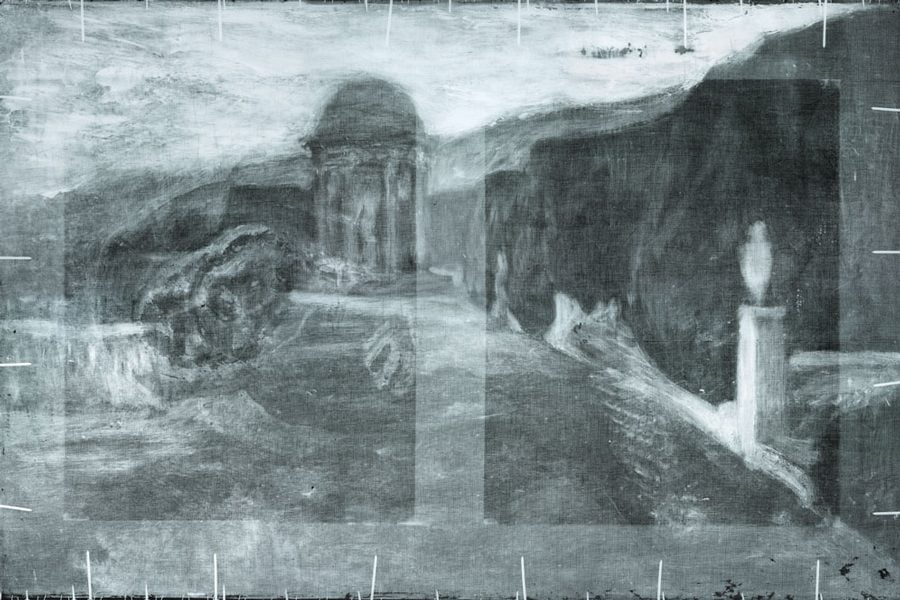NU researchers discover landscape under Picasso painting
Source: Art Gallery of Ontario
An X-ray of Pablo Picasso’s “La Miséreuse accroupie” reveals a landscape hidden beneath the surface. Northwestern researchers were part of the NU-ACCESS team that discovered the hidden landscape.
February 18, 2018
Northwestern researchers are part of a team that recently discovered hidden details beneath the surface of Pablo Picasso’s “La Miséreuse accroupie” painting, according to a Saturday news release.
The Northwestern University/Art Institute of Chicago Center for Scientific Studies in the Arts, Art Gallery of Ontario and the National Gallery of Art, Washington — with knowledge of an underlying landscape already discovered by x-ray radiography — used non-invasive portable imaging techniques to detail buried images under the “La Miséreuse accroupie” painting.
The landscape found under “La Miséreuse accroupie” was likely painted by an unknown Barcelona artist, the release noted.
One of the techniques used — an X-ray fluorescence imaging instrument — was developed at NU. McCormick Prof. and NU-ACCESS co-director Marc Walton, NU-ACCESS co-director Francesca Casadio, and postdoctoral fellows Emeline Pouyet and Gianluca Pastorelli are studying the painting.
Picasso painted over the landscape after rotating it 90 degrees to the right and incorporating some of the landscape’s details into his “La Miséreuse accroupie” painting, such as the lines of the cliff edges into the woman’s back, according to the release.
Another detail discovered was that Picasso originally painted the woman with a right arm and a hand holding a disk, but later covered them with her cloak in the final version.
The arm hidden in “La Miséreuse accroupie” was confirmed by the imaging technology to be the same as the correct right arm of a woman in a Picasso watercolor, titled “Femme assise,” recently sold at an auction, according to the release.
NU-ACCESS is also studying Picasso’s bronzes using non-invasive portable instruments and a database of alloy “fingerprints,” tracing five bronzes casts in Paris during World War II to the foundry of Émile Robecchi, one of Picasso’s lesser-known collaborators, a Saturday news release noted.
The alloys analyzed in Picasso’s bronzes give researchers an idea of how, when and where the bronzes were cast. The five bronzes traced back to Robecchi’s foundry didn’t have a foundry mark, according to the release.
The researchers discovered the use of silver for facial features in a work inspired by one of Picasso’s wives.
These non-invasive technologies used to analyze the painting and bronzes have allowed researchers to get a better understanding of Picasso’s relationship with craftsmen, style, influences and process, according to the releases.
Email: [email protected]
Twitter: @alliejennaphoto












